This article is all about South Korean trees.
We’ll explore 10 tree species native to the Korean peninsula, including their usages and the origins of their Korean names.
Before we dive into South Korean trees, let’s go over the current state of Korean forestry.
Forests in South Korea
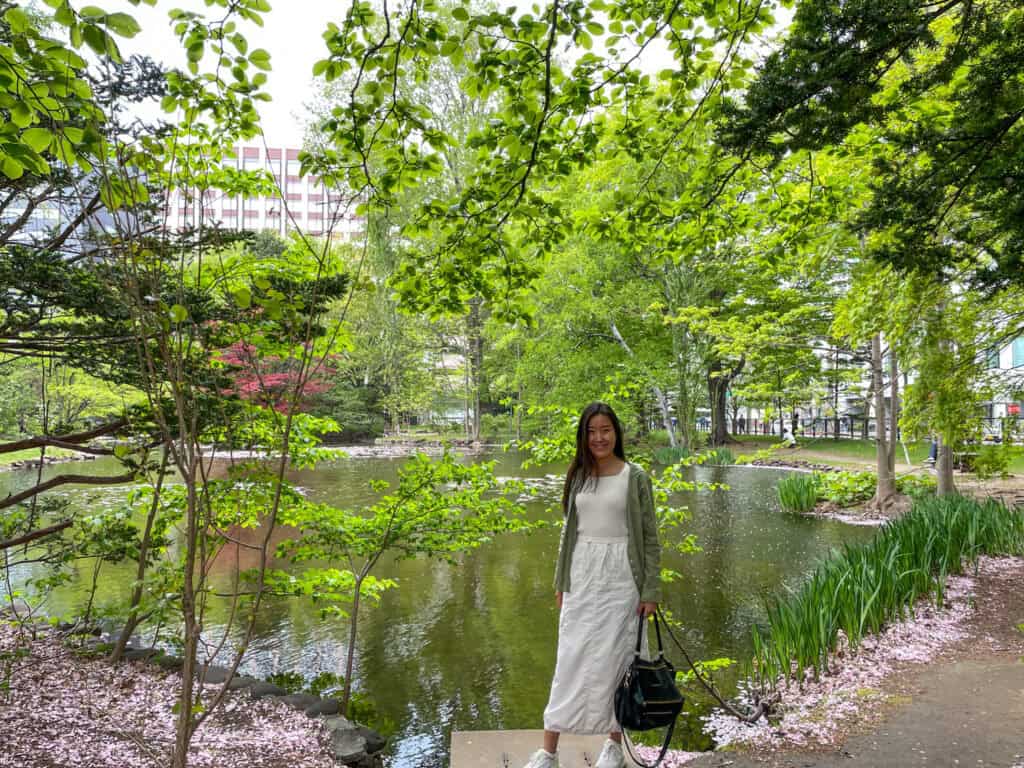
There are 4 main types of forests of South Korea. These include coniferous forests (with evergreen trees like pines and firs), broadleaf forests (including oaks), mixed forests and bamboo forests.
Largest Forests in South Korea
The largest forest in South Korea is located in Odaesan National Park, which is 126 sq mi (326 sq km).
Other notable forests include Gotjawal on Jeju Island. The porous volcanic rock from Hallasan forms the highly viscous Gotjawal terrain.
While these characteristics make it poor for cultivation, it’s now home to a healthy native forest less touched by humans.
South Korean Forest Restoration Efforts
Successful Reforestation Efforts Post-Korean War
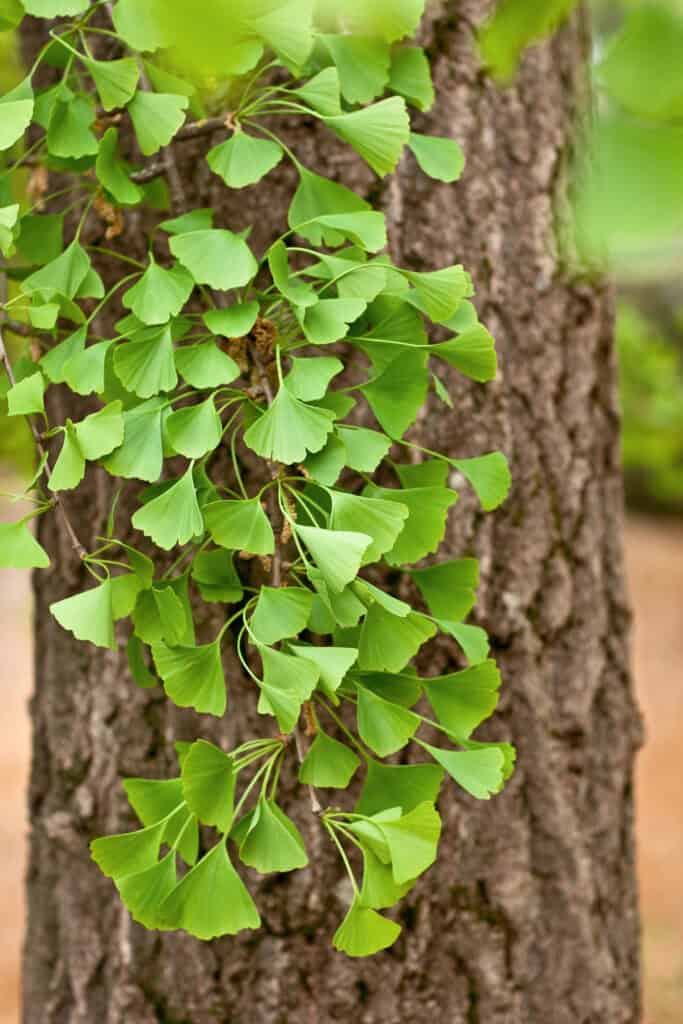
South Korea was seriously deforested and barren after the Korean War, but today 63% of the country is covered by forests.
The reforestation didn’t happen overnight, though.
Some 10 billion trees were planted in Korea between the 1960s and 80s, under President Park Chung-Hee.
South Korea is apparently the only country that’s been able to successfully restore its forests post World War II, according to the Center for International Environmental Law.

One of the main causes for deforestation post Korean War was the use of wood as fuel in poor rural communities. In response, the Korean Forest Service was created in 1967 and firewood development projects went underway.
Forest restoration efforts continued through the 1980s through the National Greening Program.
The Korea Forest Service estimates that the economic value of Korea’s forests is 199 billion USD per year, or about 3,850 USD per capita.
10 South Korean Trees
1. Korean Red Pine (Pinus densiflora): Twisted, Reddish Trunks
The Korean Red Pine makes up about 22% of forests in South Korea. While you can find them throughout South Korea, they’re most prominent in Gangwon-do and on the coasts of Gyeongsangbuk-do.
These red pines can grow up to 130 ft (30m) tall in nature and have twisted, irregularly shaped trunks that grow almost horizontally near the base, revealing a peeling reddish bark.
While the Korean red pine is an evergreen tree, on some soils, the needles can turn yellowish during the colder months.
2. Korean Pine (Pinus koraiensis): Ancient Trees in Korean History
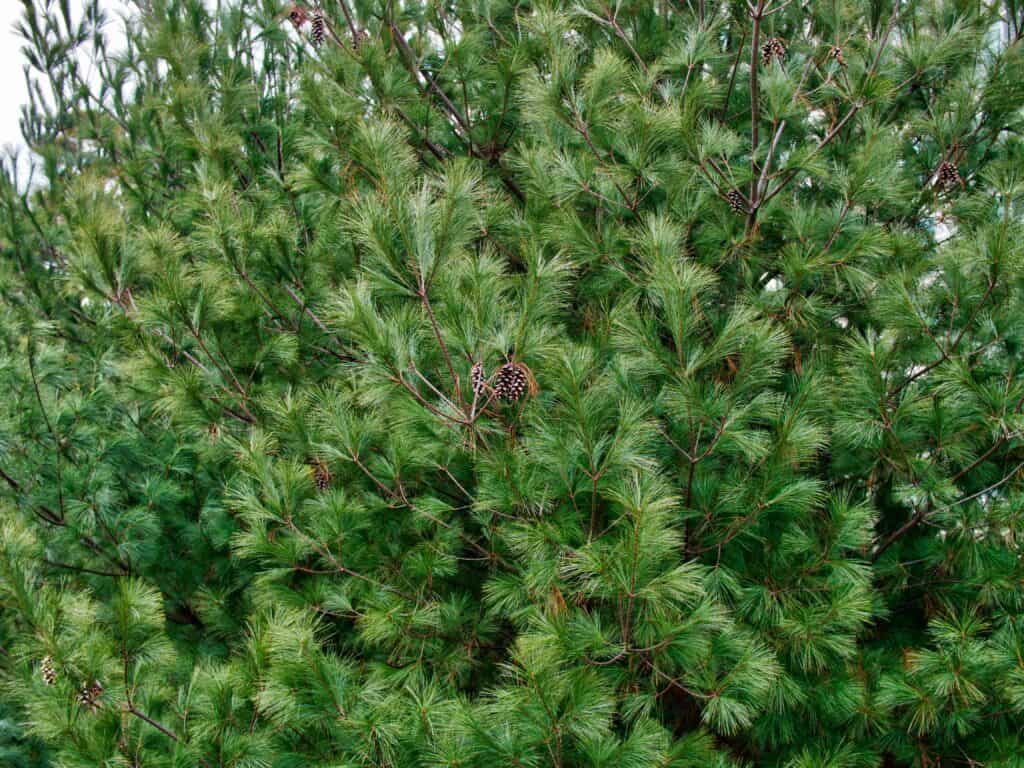
Korean pine is one of the oldest trees in South Korean history.
These pines live for hundreds of years and grow in a loose pyramid shape, typically reaching heights of 30-40 ft (9-12 m) and widths of 15-20 ft (1.5-6 m).
The pine nuts from the cones of this evergreen tree are edible.
Other products made from Korean pine tree include pine nut oil and pine needle oil, as well as industrial products such as turpentine and tannin. The timber from Korean pine is also used in construction.
This pine tree adapts well to cold weather and can be found in mountainous regions in East Asia, including in Japan, China, Mongolia and Russia.
3. Korean Fir (Abies koreana): Pretty Conical Tree
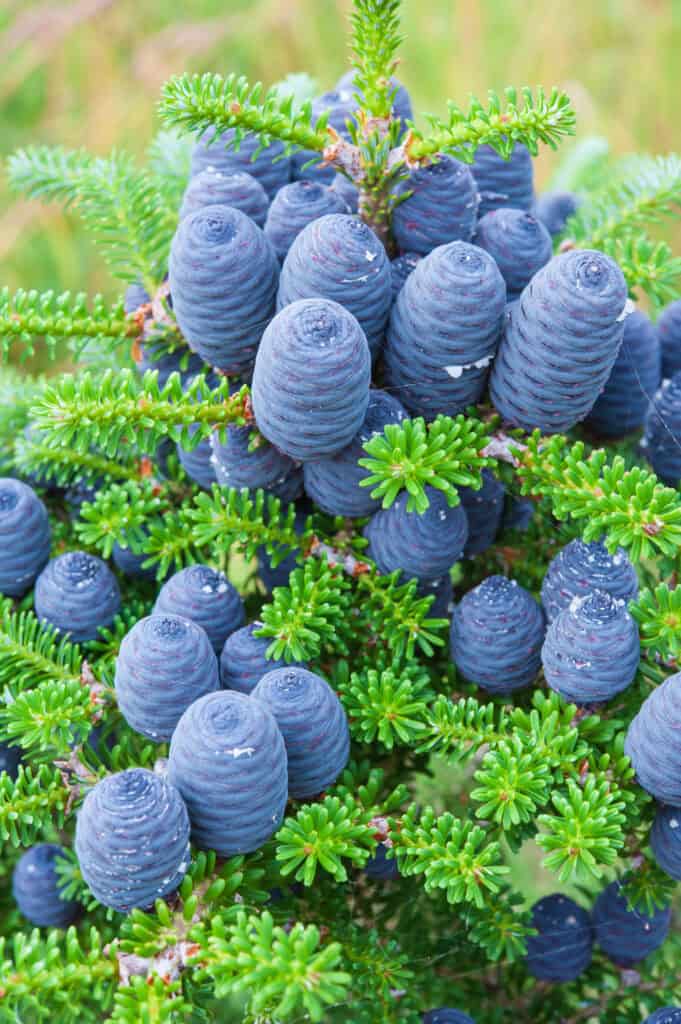
The Korean fir is an evergreen conifer originating from the Korean peninsula. This fir grows in a conical shape to 15-30ft tall and 6-12ft wide, and has blue or purple cones.
The UK’s Royal Horticultural Society recognized the Korean fir with the RHS Award of Garden Merit for being a great plant to grow in your garden.
Homeowners use it in backyards for privacy screening, and also as an ornamental yard tree or Christmas tree.
The Korean fir is more resistant to heat than most firs, but does not do well in wetter soils and in urban areas.
4. Jolcham Oak (Quercus serrata): Main Oak Species in South Korea
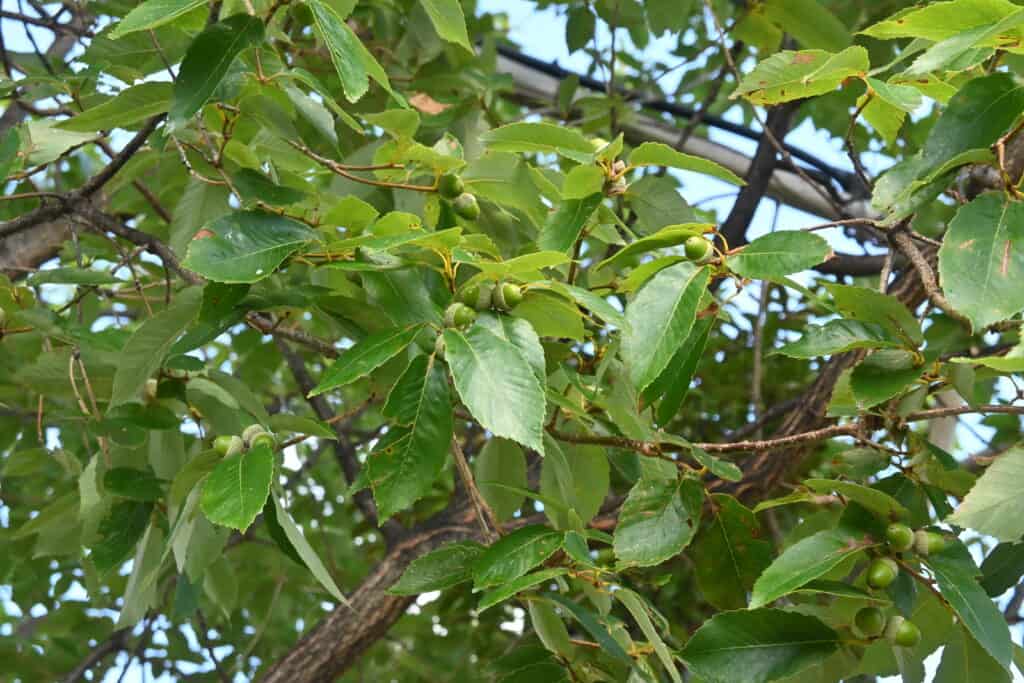
The main oak species in South Korea is the Jolcham, which is native to Korea, China and Japan.
People named the Jolcham oak after its small leaves, comparing them to the smaller solders, or the “jol,” who were sent to form the front line of defense and were often the first to die in battle.
In addition to its edible acorns, the timber from the Jolcham oak is used in construction and tannin can be extracted from its bark.
5. Saw-Leaf Zelkova Tree (Zelkova serrata): Used in Palaces and Temples
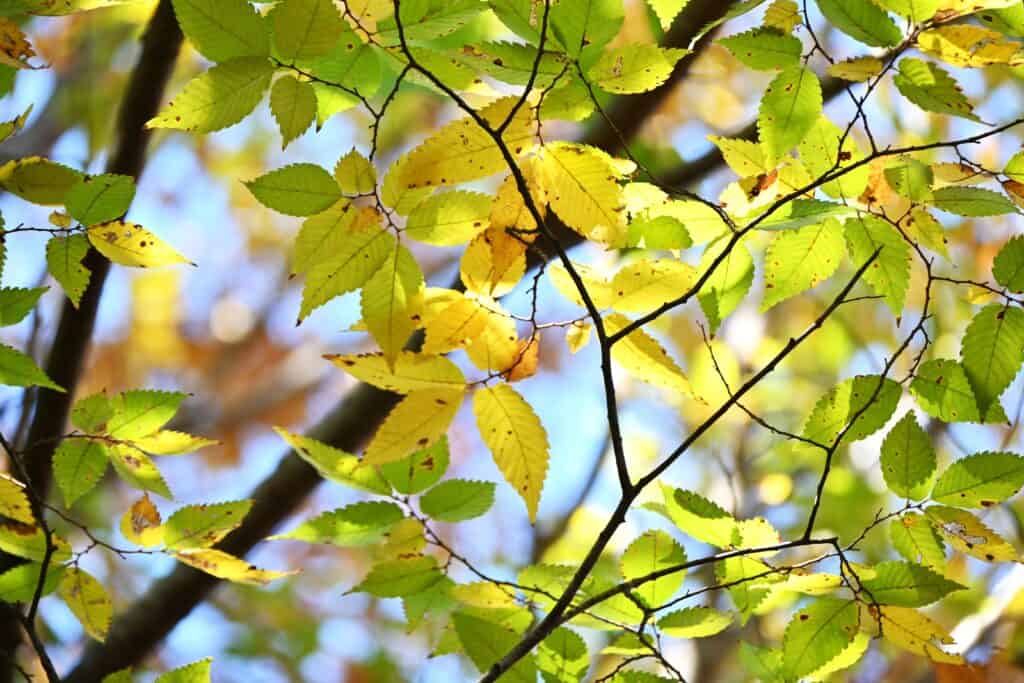
The Zelkova tree, pronounced neu-ti namu (느티나무) in Korean, is a deciduous elm native to Korea, China, Japan and Russia.
The timber of Zelkova has historically been used in the construction of palaces and temples, as well as high-end furniture and instruments in Korea.
Today, Zelkovas are planted in public areas like around schools for their beautiful round shape.
South Korea has designated 19 Zelkova tree sites as Natural Monuments, including ancient trees that are over 500 years old.
6. Mongolian Oak (Quercus mongolica): Grows in Higher Elevations
Pronounced Shin-gal namu (신갈나무) in Korean, the Mongolian oak grows across South Korea, except in the southern and western coasts.
This oak tree grows up to 50 ft tall and 40 ft wide into a rather irregular shape and has edible acorns.
Mongolian oak survives at higher elevations than other oak species and grows at altitudes up to 5,900 ft (1,800 m) in South Korea.
7. East Asian Cherry (Prunus serrulata): Rosy White Cherry Blossoms
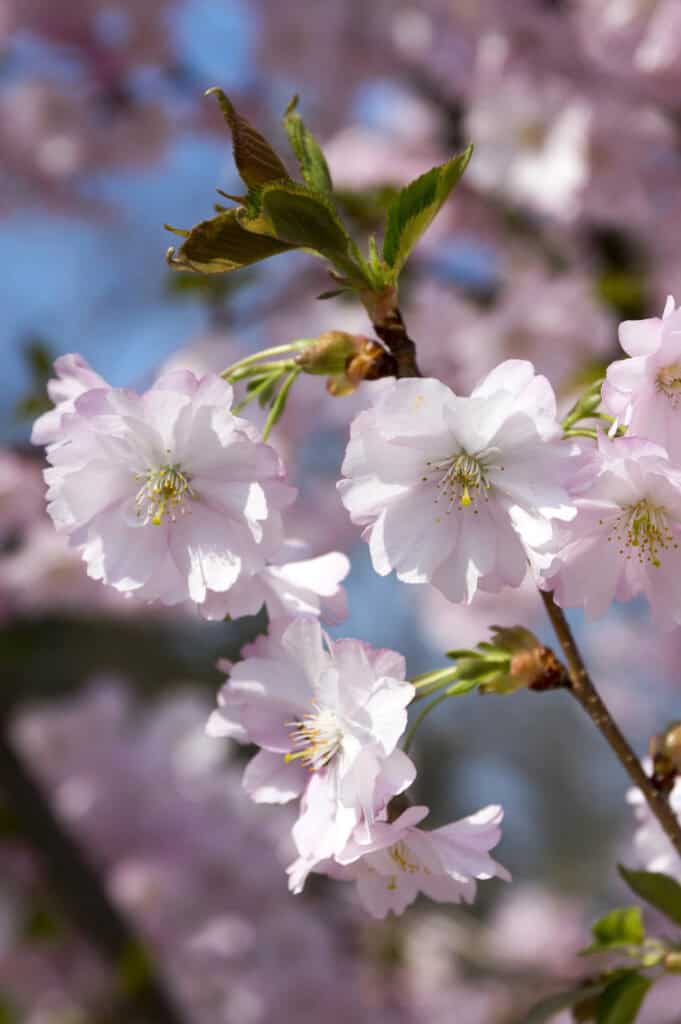
“But namu’ (벚나무) is a cherry blossom tree that blooms faintly pink, almost white flowers between April and May.
East Asian Cherry grows nationwide in South Korea, but thrives especially in moister soils in mountainous areas, up to 4,900 ft (1,500 m) in altitude.
This cherry blossom tree grows round fruit from June to July. Its timber is easily to work with and is used to build high-end furniture, instruments and the wooden components of industrial machines.
8. Sargent’s Cherry (Prunus sargentii): Deeper Pink Cherry Blossoms

“San-but namu” (산벚나무) is a cherry blossom tree that blooms from April to May.
Compared to the East Asian Cherry, the flowers that grow on Sargent’s Cherry resemble a deeper, distinctive pink color.
In addition, the young leaves and petioles (leafstalk) of Sargent’s Cherry are not fuzzy.
You can find Sargent’s Cherry in Korea, Japan and Russia. The namesake Charles Sprague Sargent found the species in northern Japan in 1892.
9. Snowbell Tree (Styrax japonicus): Fragrant, White Bell-Shaped Flowers
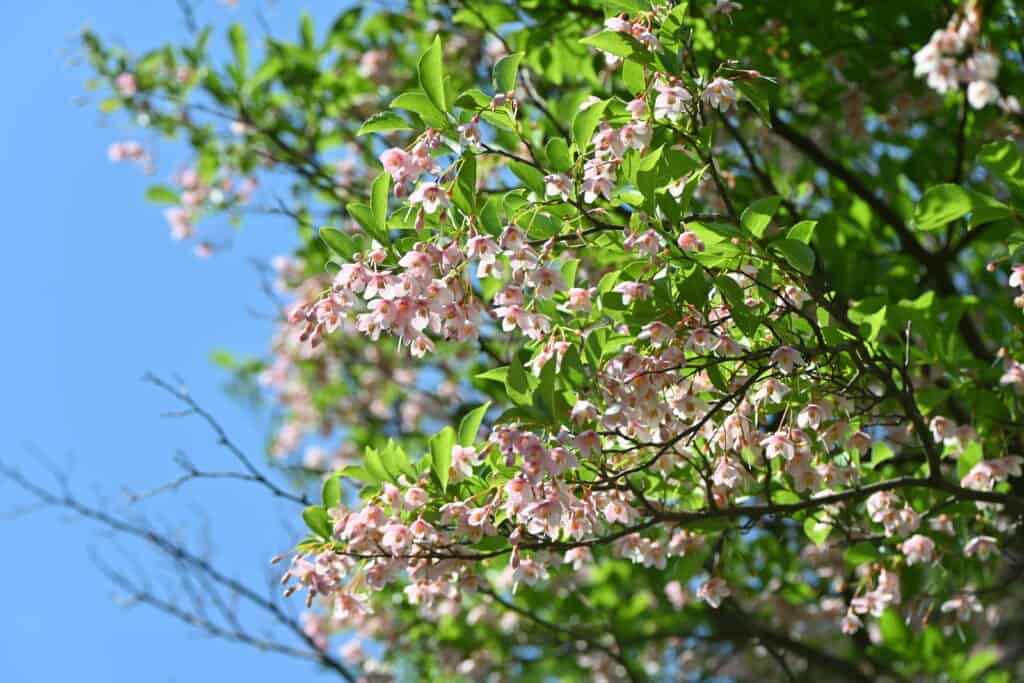
The snowbell tree is a deciduous tree that got its name from the mildly fragrant white bell-shaped flowers that bloom in clusters from May to June.
This tree is native to Korea, Japan and China.
There’s a few folklore stories about how the snowbell tree got its Korean name, “dde-juk namu” (때죽나무).
The first is that the bark produced a lot of flaky dirt if you rubbed against it, similar to the dead skin, or dde, that comes off your body when you get it professionally scrubbed at a Korean bathhouse.
Another story is that the clusters of white snowbell flowers looked like a crowd of young monks, or dde-joong, which was eventually instead pronounced dde-juk.
The last story is that hoards of fish, or a dde of fish, would die in the river if you threw the snowbell tree’s crushed, olive-like fruit into the river.
Today, you’ll find lots of snowbell trees in parks and other areas to beautify that space. It’s a smaller tree that grows to about 40 ft (12 m) tall.
10. Ginkgo Tree (Ginkgo biloba): Ancient Trees in Traditional Medicine

Growing up, I would both dearly admire the captivating yellow foliage of the ginkgo trees in the fall, before wincing at the absolutely stinky, round fallen fruit dotting the sidewalk.
This famous tree has long been used in traditional Chinese medicine. The royals ate the stinky nuts for “senility” and you can still find extracts of the wide, fan-shaped leaves positioned as cognitive health supplements today.
The National Center for Complementary and Integrative Health have not found conclusive evidence about its positive health effects.
The gingko tree is referred to as a “living fossil” because it’s one of the oldest known trees in the world, and existed before dinosaurs. The oldest known gingko leaf fossils date back to ancient times – back to more than 200 million years ago!
South Korean Trees (Conclusion)
In this guide, we went over South Korean trees, from the ancient gingko tree to the beautiful, striking Sargent’s Cherry tree.
South Korean Forest Restoration Efforts
- Korean Red Pine (Pinus densiflora): Twisted, Reddish Trunks
- Korean Pine (Pinus koraiensis): Ancient Trees in Korean History
- Korean Fir (Abies koreana): Pretty Conical Tree
- Jolcham Oak (Quercus serrata): Main Oak Species in South Korea
- Saw-Leaf Zelkova Tree (Zelkova serrata): Used in Palaces and Temples
- Mongolian Oak (Quercus mongolica): Grows in Higher Elevations
- East Asian Cherry (Prunus serrulata): Rosy White Cherry Blossoms
- Sargent’s Cherry (Prunus sargentii): Deeper Pink Cherry Blossoms
- Snowbell Tree (Styrax japonicus): Fragrant, White Bell-Shaped Flowers
- Ginkgo Tree (Ginkgo biloba): Ancient Trees in Traditional Medicine
Thanks for checking out my article about South Korean trees!

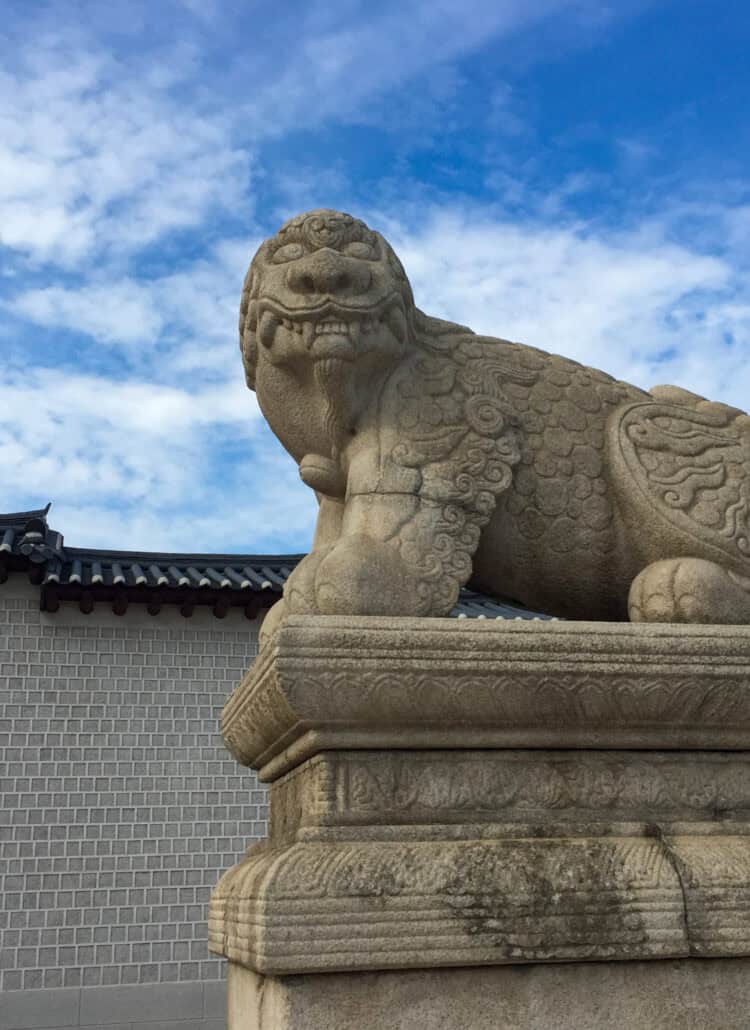
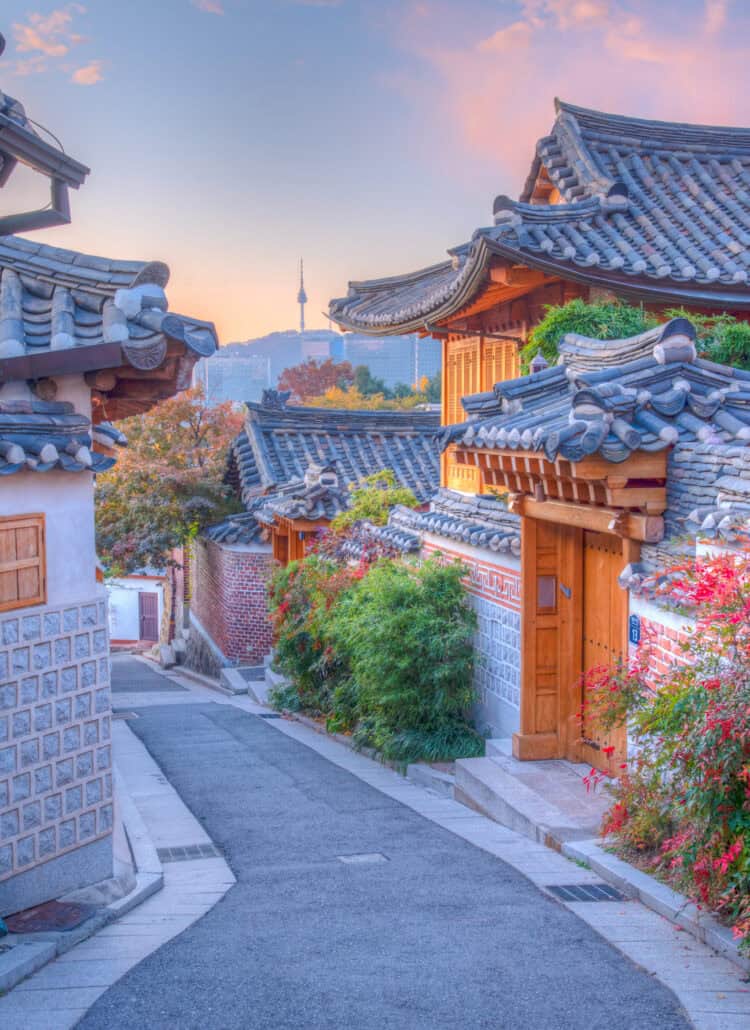

[…] 20 years, and bake their chicken over oak firewood, after stuffing it with sticky rice, jujube and ginkgo nut. Top off the chicken with a refreshing beer, in classic Korean chimaek (chicken + maekju, which is […]